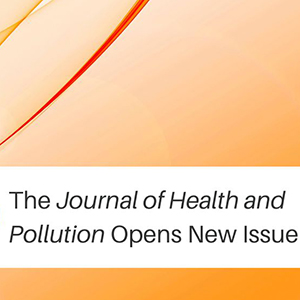For the first time, the journal Environmental Health Perspectives (EHP) has released a curated collection of papers selected as standouts by its science editors. The Editors' Choice Collection 2021, posted on Jan. 28, highlights 15 notable papers published during the previous year. All the journal’s articles are freely available online.
 EHP science editors selected papers that help fill key knowledge gaps in environmental health sciences, are interesting to read, and address timely topics. (Image courtesy of LEOcrafts / iStockphoto)
EHP science editors selected papers that help fill key knowledge gaps in environmental health sciences, are interesting to read, and address timely topics. (Image courtesy of LEOcrafts / iStockphoto)Timely, original, interesting
 Boyd leads the team of science editors, who in 2021 reviewed more than 1,900 manuscripts submitted for publication. (Photo courtesy of Steve McCaw / NIEHS)
Boyd leads the team of science editors, who in 2021 reviewed more than 1,900 manuscripts submitted for publication. (Photo courtesy of Steve McCaw / NIEHS)“‘Best of’ lists in scholarly publishing typically include most-read or most-cited works,” said EHP Senior Science Editor Windy Boyd, Ph.D. “The other editors and I wanted to highlight articles that address a key knowledge gap in environmental health sciences or were truly interesting to read.” She noted that they included timely topics like COVID; papers with implications for underserved populations; and those that showed originality. The team also wanted to capture the breadth of topics the journal publishes. Article types vary as well, including research articles, reviews, news, commentaries, and the new Research Letter category.
“The collection offers EHP an opportunity to weigh in on important developments in environmental health, whether they address scientific advances, inequities in exposures, new tools, or questions of policy,” said EHP Editor-in-Chief Joel Kaufman, M.D. In keeping with an editorial Kaufman co-authored, several papers in the collection address matters of environmental racism, such as racial disparities in air pollution exposure, and historical redlining and greenspace.
Sharing the love
In past years, EHP editors have curated collections of most-cited papers to mark release of a new Journal Impact Factor. But from the editors’ perspective, garnering the most citations is just one way to identify important scientific research. It can take years for citations to accumulate, so the new collection is a way to recognize recent paper and current contributors.
 Woolard’s news team publishes brief summaries of specific papers’ findings and implications, as well as feature-length articles on current environmental health topics. (Photo courtesy of Steve McCaw / NIEHS)
Woolard’s news team publishes brief summaries of specific papers’ findings and implications, as well as feature-length articles on current environmental health topics. (Photo courtesy of Steve McCaw / NIEHS)EHP News Editor Susan Booker Woolard, who led the project, offered another contrast with the impact factor collection. “The Editors’ Choice Collection is a good way to say, ‘we love you because you are awesome’ instead of ‘we love you because you did something for us,’” she said.
Associate Science Editor Kristin Inman, Ph.D., a contractor, concurred. “This collection allows some of our more clever or unusual papers to shine, which otherwise might not get as much notice,” she said. For example, a research letter on fine particulate matter in a cannabis shop that allowed on-site consumption brings attention to exposures faced by staff and other customers — a research gap that becomes increasingly urgent as more states loosen laws around medicinal and recreational use.
Collaboration distills excellence
Each of the journal’s five science editors nominated papers. Then they collaborated to narrow down the selection to a manageable size. The team’s newest member is epidemiologist Sabah Quraishi, Ph.D., who came on board in mid-2021. “Not many papers I worked on made it all the way to publication by December, so I focused on papers I might suggest to a colleague or student, regardless of their own subspecialty,” she said. “For example, I nominated articles that had an important takeaway — such as the method used — for anyone in environmental epidemiology.”
Similarly, Boyd, a toxicologist, considered how the exposure or health outcome under study was relevant to human health. Her selections included papers addressing chemical mixtures — which more closely resemble real-world exposures — or advancing our understanding of links between exposures and prevalent diseases such as dementia and Alzheimer’s.
The journal’s news and marketing teams spread the word with social media posts touting the collection itself, as well as tweets for each individual paper.
Citation: Kaufman JD, Hajat A. 2021. Confronting environmental racism. Environ Health Perspect 129(5):51001.
(Kelly Lenox is EHP associate news editor and former editor-in-chief of the Environmental Factor.)









